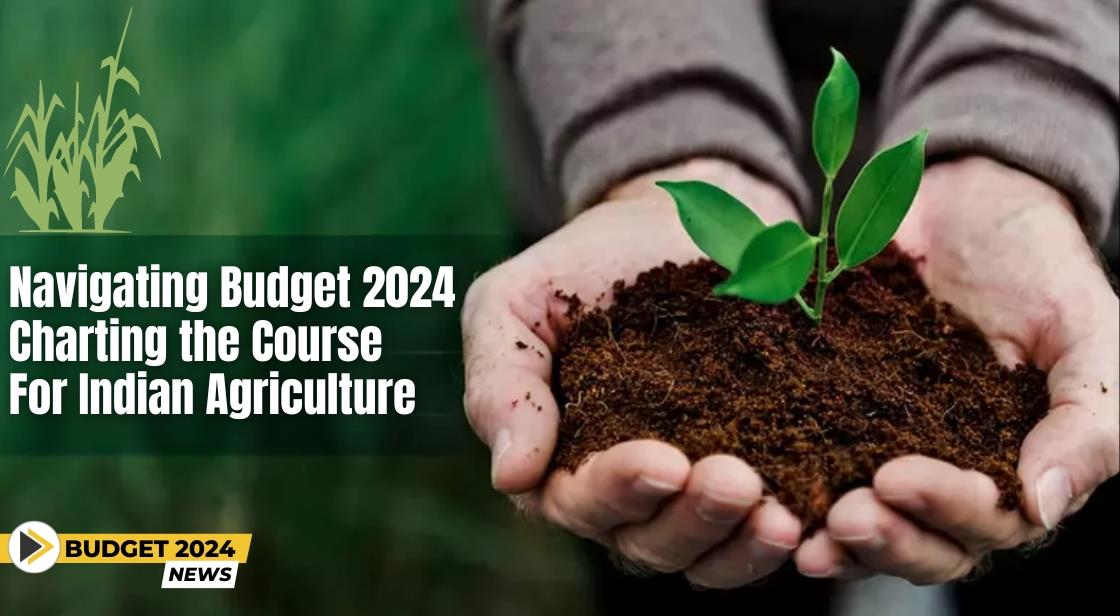Navigating Budget 2024: Charting the Course for Indian Agriculture

News Synopsis
As the monsoon winds subside and harvest season approaches, India's farmers and agricultural sector brace themselves for another crucial chapter – Budget 2024. With Finance Minister Nirmala Sitharaman set to take the stage on February 1st, anticipation hangs heavy in the air. Will this budget nurture the fertile ground of Indian agriculture, fostering growth and empowering its millions of tillers?
As the interim budget for 2024 approaches, reflections on the significant impact of the 2019 interim budget prompt speculation on potential announcements. The agricultural sector, a linchpin of India's economy, is poised for attention, considering the evolving dynamics since the pandemic years of 2020-21 and 2021-22.
Agricultural Landscape Post-Pandemic
During the pandemic, the Gross Value Added (GVA) from agriculture and allied sectors witnessed fluctuations, accounting for 20.3% and 19% of the economy in 2020-21 and 2021-22, respectively. As the broader economy rebounded, agriculture's share receded to 18.3% in 2022-23, signaling the resurgence of more productive sectors.
Themes for Interim Budget
1. Employment Opportunities Beyond Agriculture
-
The budget should outline a roadmap for creating lucrative employment opportunities beyond agriculture, enabling workers to transition to higher-income sectors.
-
Sectors like textiles, garments, food processing, and tourism can absorb surplus workers, demanding innovative thinking and quality infrastructure to enhance global competitiveness.
2. Conserving Soil and Water Resources
-
Priority should be given to preventing soil and water degradation in the green revolution regions of Punjab, Haryana, Western Uttar Pradesh, and Uttarakhand.
-
Policy support and funding are essential to promote diversification from water-intensive crops and avert ecological threats.
3. Boosting Horticulture, Livestock, and Fisheries
-
Aligning with changing dietary preferences, the budget should focus on supporting horticulture, livestock, and fisheries to address malnutrition concerns.
-
With a significant portion of the population being non-vegetarian, emphasizing protein-rich food sources is crucial, necessitating investments in marketing infrastructure.
Budget Priorities
1. Empowering Non-Agricultural Employment
-
Facilitating employment diversification into non-agricultural sectors requires bold and imaginative strategies.
-
Prioritizing sectors contributing to goods exports and enhancing global competitiveness is vital for sustainable growth.
2. Ecological Preservation in Green Revolution Regions
-
Addressing the ecological threats in green revolution regions demands a comprehensive roadmap, including financial incentives for diversification.
-
Central funding support is crucial to prevent an ecological disaster and safeguard the agriculturally aware states of Punjab and Haryana.
3. Supporting Nutrient-Rich Sectors
-
Recognizing the shift in dietary preferences towards more nutritious and protein-rich food, the budget should allocate resources to horticulture, livestock, and fisheries.
-
Investments in marketing infrastructure are essential to capitalize on the opportunities in the rural economy and enhance productivity.
Beyond Budget 2024: Sustaining Momentum and Adapting to Realities
The past decade has witnessed commendable government initiatives like PM-Kisan Samman Nidhi, the repeal of farm laws, and increasing agricultural credit allocations. However, the momentum for transformative reforms in agricultural marketing and distribution must be restored, adapting to the diverse ground realities of each Indian state.
This interim budget should act as a bridge, setting the stage for a comprehensive post-election budget that effectively addresses the challenges and opportunities faced by Indian agriculture.
By prioritizing better employment opportunities, environmental protection, and nutritional security, the government can foster a future where agriculture thrives alongside economic and social progress.









